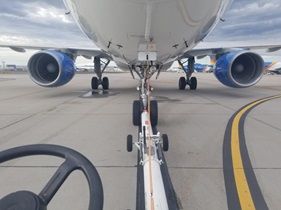The International Air Transport Association (IATA) has launched the IATA Security Management System (SeMS) Certification Program to strengthen aviation security. The SeMS Certification Program is open to airlines, airports, cargo handling facilities, freight forwarders, ground handling service providers, and security service providers.
“SeMS is key to transforming global aviation security from a compliance mentality to one that is proactive in identifying and mitigating security risks and driving continuous improvements. This is vital for a much-needed modernization of aviation security built on dynamic, risk-based, and outcome-focused solutions. This is a major transition that must involve the entire sector. For that reason, the SeMS Certification is an independent assessment that will be available industry-wide, offering support and recognition to organisations at every phase of SeMS implementation,” said Nick Careen, IATA’s Senior Vice President for Operations, Safety, and Security.
SeMS provides an entity with a framework of operating principles and guidance which enable it to enhance security performance by proactively managing risks, threats, and areas where there are gaps and challenges, which may have a negative impact on that performance. While SeMS is not yet a mandated aviation security management process, its implementation is supported by IATA, ICAO, and key aviation regulators around the world.
To develop a certification program that can support various industry participants, an extensive case study was conducted, involving Japan Airlines, Brisbane Airport Corporation, CACC Cargolinx, Worldwide Flight Services Inc and Mozambique Airport Handling Services (MAHS).
The SeMS Certification Program follows a tiered approach, to meet the needs of organisations at varying levels of SeMS maturity:
● Level 1: SeMS procedures are in the early stages of development, with foundational elements established and ongoing progress toward formal documentation and consistent application.
● Level 2: SeMS procedures fully align with the SeMS Manual, are comprehensively documented, and consistently applied across all relevant areas.
● Level 3: SeMS procedures are implemented at an advanced level, achieving the highest standards. These procedures proactively identify, mitigate, and manage security risks while fostering a culture of continuous improvement.
IATA’s SeMS Certification program is part of a comprehensive IATA SeMS adoption strategy that also includes:
● A SeMS Community, where individuals can learn and receive insights about SeMS principles and test their knowledge.
● Self-Assessment Tools, to help organisations evaluate how well they understand and apply SeMS principles, ensuring they are prepared for the certification process.
● Expanded Security Management Requirements, requiring IOSA-registered airlines, starting in January 2025, to oversee that their external service providers—including ground handling, security, and catering—implement SeMS in accordance with the updated IOSA Standards Manual Edition 18.
“IATA’s SeMS Certification, education initiatives, self-assessment tools and expanded security management requirements are part of a comprehensive strategy to improve security with a proactive and risk-based approach. This is a step beyond compliance to create a culture of continuous improvement across the entire supply chain,” said Careen








